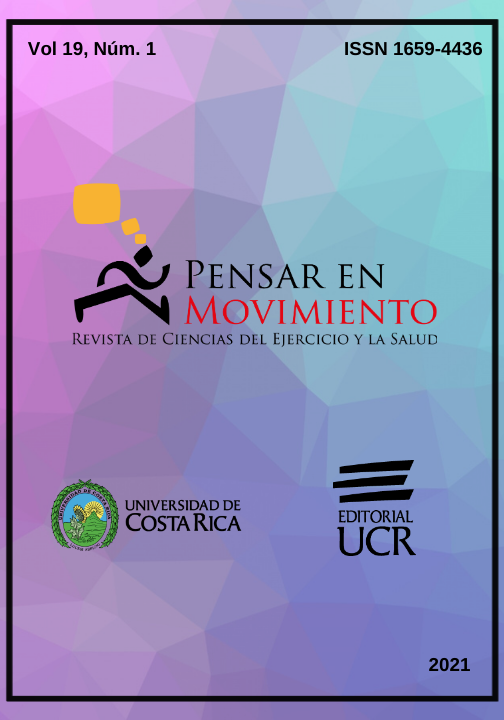Abstract
The evidence on the importance of regular exercise is overwhelming. Awareness of this fact leads many people to resort to simple, attractive solutions marketed through TV. Many countries, unfortunately, lack strict regulations to assess the claims made by commercial items. Moreover, it would seem that requirements for scientific evaluation of exercise-related products do not exist at all. Every time someone purchases exercising equipment and shortly afterwards decides to give up working out because no positive results can be seen, one step backwards is taken in public health. The purpose of this study was to measure the actual energy expenditure induced by using a commercially available device for exercising at home and compare it to the claims made about it in advertising. Various field and laboratory methods were used to measure the energy expenditure of 27 young, apparently healthy students (15F, 12 M; 19.1 ± 1.0 years old; 1.647 ± .073 m; 63.09 ± 10.13 kg; mean ± SD) while they were resting for 10 minutes in supine position, and then while working out on the equipment at medium speed for 10 minutes. None of the methods used showed a gross energy expenditure above 272 kJ (65 kcal) in 10 min activity. Oxygen consumption during stress was equivalent to 1.54 ± .23 MET, corresponding to 23.4 ± 9.2 kJ (5.6 ± 2.2 kcal) net expenditure, or 70.3 ± 11.7 kJ (16.8 ± 2.8 kcal) gross expenditure. In contrast, the gross energy expenditure reported in the equipment’s commercial is 277 kcal (1159 kJ) for 10 min. In conclusion, the actual net energy expenditure is 1/50 (two hundredths) the energy expenditure being claimed in the advertisements.
References
Ainsworth, B.E., Haskell, W.L., Herrmann, S.D., Meckes, N., Bassett, D.R. Jr, Tudor-Locke, C., Greer, J.L., Vezina, J., Whitt-Glover, M.C. y Leon, A.S. (2011). 2011 Compendium of Physical Activities: A Second Update of Codes and MET Values. Medicine & Science & Sports & Exercise, 43(8), 1575-81. doi: https://doi.org/10.1249/MSS.0b013e31821ece12
Asamblea Médica Mundial. (1964). Declaración de Helsinki: Principios éticos para las investigaciones médicas en seres humanos. Recuperado de http://www.conamed.gob.mx/prof_salud/pdf/helsinki.pdf
Canal Oficial de A3D Chile [a3dchile]. (14 de octubre, 2016). Plataforma Vibratoria Power Fit [Archivo de video]. Recuperado de https://www.youtube.com/watch?v=jg2FRE-1BrM
Donnelly, J.E., Blair, S.N., Jakicic, J. M., Manore, M.M., Rankin, J.W. y Smith, B.K. (2009). Appropriate Physical Activity Intervention Strategies for Weight Loss and Prevention of Weight Regain for Adults. Medicine & Science in Sports & Exercise 41(2), 459-471. doi: https://doi.org/10.1249/MSS.0b013e3181949333
Hills, A.P., Mokhtar, N. y Byrne, N.M. (2014). Assessment of physical activity and energy expenditure: an overview of objective measures. Frontiers in Nutrition 1(5),1-16. doi: https://doi.org/10.3389/fnut.2014.00005
Montoya Arroyo, J.A., Ramírez Cambronero, J. y Aragón Vargas, L.F. (2021). Base de datos para Medición del gasto energético real por usar un producto comercial para ejercitarse en el hogar. Pensar en Movimiento: Revista de Ciencias del Ejercicio y la Salud, 19(1). doi: https://doi.org/10.15517/pensarmov.v19i1.46702
Office of Disease Prevention and Health Promotion [ODPHP]. (2008). 2008 Physical Activity Guidelines for Americans. Recuperado de https://health.gov/paguidelines/2008/appendix1.aspx
Pate, R.R., Almeida, M.J., McIver, K.L., Pfeiffer, K.A. y Dowda, M. (2006). Validation and Calibration of an Accelerometer in Preschool Children. Obesity: a Research Journal, 14(11), 2000-2006. doi: https://doi.org/10.1038/oby.2006.234
Physical Activity Guidelines Advisory Committee. (2008). Physical Activity Guidelines Advisory Committee Report, 2008. Washington, United States of America: Department of Health and Human Services. Recuperado de https://health.gov/sites/default/files/2019-10/CommitteeReport_7.pdf
Thompson, W.R. (2018). Worldwide Survey of Fitness Trends from 2019. ACSM's Health & Fitness Journal, 22(6), 10-17. doi: https://doi.org/10.1249/FIT.0000000000000438







